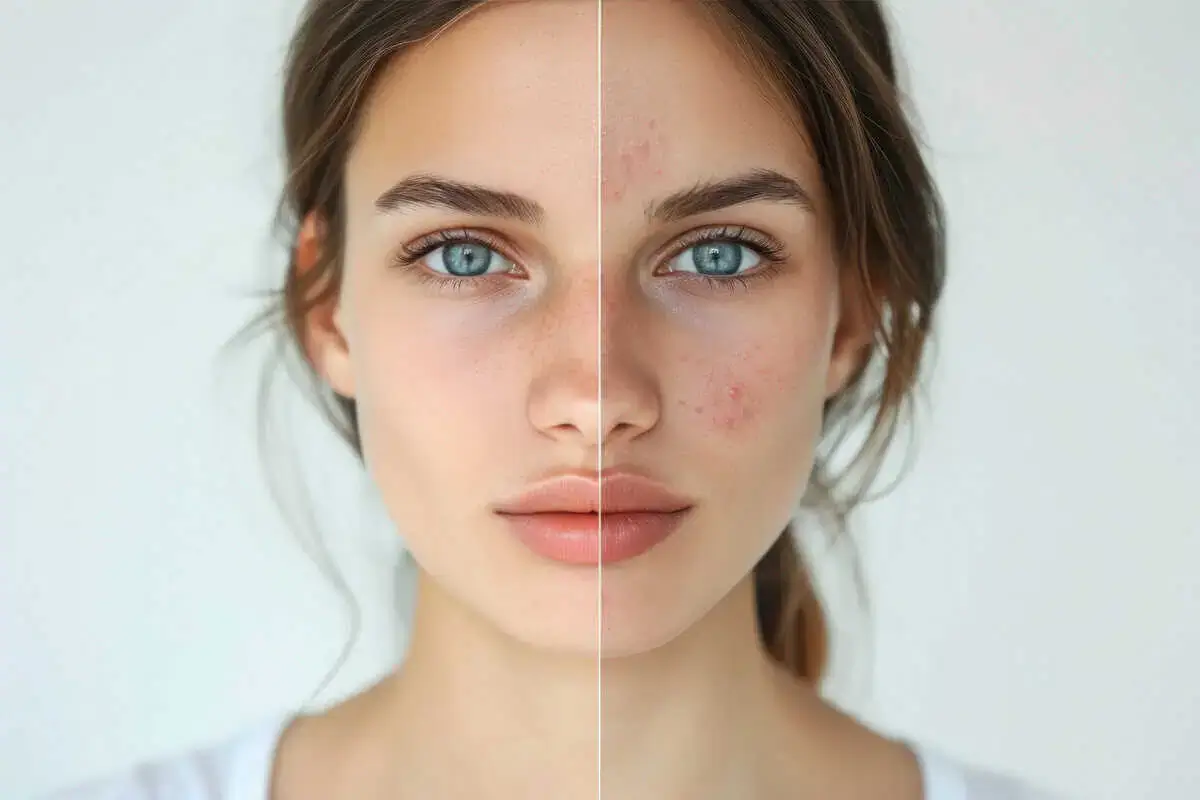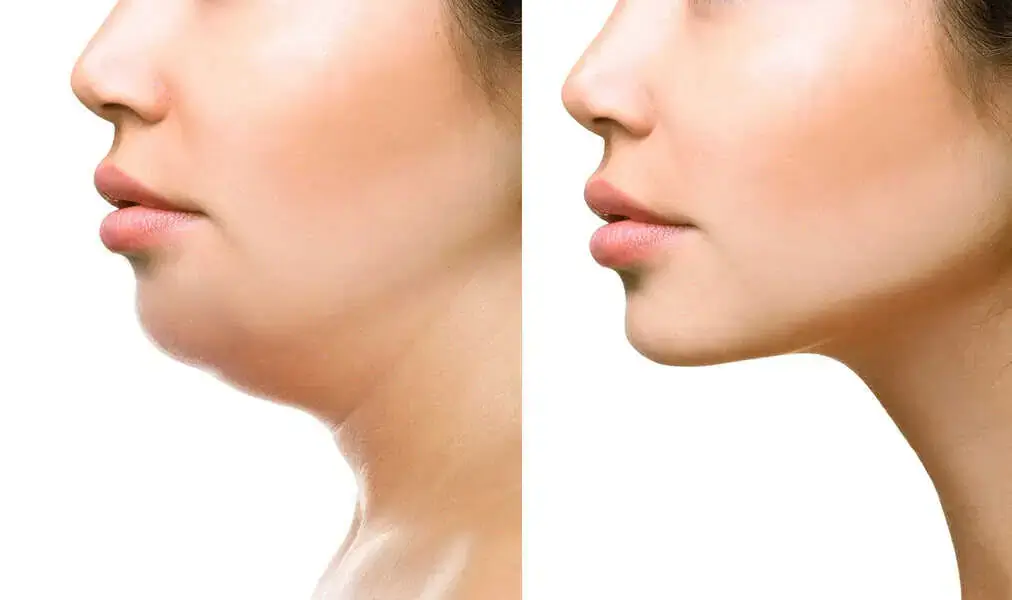The Science Behind Chemical Peels: How They Work on Your Skin
Many of us turn to various skincare treatments and products for radiant and youthful skin. One popular and effective option is the chemical peel. Chemical peels have gained widespread recognition for their ability to address various skin concerns, from acne and hyperpigmentation to fine lines and uneven texture. But have you ever wondered about the science behind chemical peels and how they work their magic on your skin? This blog post will dive deep into chemical peels, exploring their mechanisms, benefits, and more.
What Are Chemical Peels?
Before delving into the science behind chemical peels, let’s start with the basics. Chemical peels are a type of skincare treatment that involves the application of a chemical solution to the skin’s surface. This solution works by exfoliating and removing the top layer of skin, which may be damaged or uneven. The result is smoother, more even-toned skin with improved texture and reduced imperfections.
Chemical peels are incredibly versatile and can be customized to address various skin concerns, making them suitable for many skin types and conditions. Whether you’re dealing with acne scars, sun damage, or age spots or want to refresh your complexion, a chemical peel is likely right for you.
The Science Behind Chemical Peels
- Alpha Hydroxy Acids (AHAs): AHAs, such as glycolic and lactic acid, are water-soluble acids that work on the skin’s surface. They help break down and remove dead skin cells, revealing fresher, youthful skin beneath. AHAs are often used in superficial peels.
- Beta Hydroxy Acids (BHAs): BHAs, like salicylic acid, are oil-soluble and can penetrate deeper into the skin. They are excellent for treating acne-prone skin as they can unclog pores, reduce inflammation, and improve skin texture.
- Trichloroacetic Acid (TCA): TCA is a medium-depth peel agent penetrating the skin even deeper. It’s effective at treating moderate skin imperfections, such as fine lines, sun damage, and uneven pigmentation.
How They Work
When a chemical peel solution is applied to your skin, it triggers a controlled injury response. This might sound counterintuitive, but this response ultimately leads to skin improvement. Here’s how it works:
- Exfoliation: The chemical solution breaks the bonds holding the outermost layer of skin cells together, effectively exfoliating and removing them.
- Stimulation: This controlled removal of the top layer of skin stimulates the skin’s natural regenerative processes.
- Collagen Production: As the skin heals, it produces new collagen—a protein responsible for firmness and elasticity. Increased collagen leads to smoother and firmer skin.
- Cell Turnover: Removing dead skin cells and promoting collagen production result in increased cell turnover. This means fresher, younger-looking skin surfaces more rapidly.
How Chemical Peels Benefit Your Skin
Now that we understand the science behind chemical peels let’s explore the numerous benefits they offer for your skin:
Improved Skin Texture: Chemical peels can significantly improve skin texture by smoothing out rough patches and reducing the appearance of fine lines.
Enhanced Skin Radiance: By removing the top layer of dull, dead skin cells, chemical peels reveal a more radiant complexion.
Reduced Hyperpigmentation: Chemical peels can lighten areas of hyperpigmentation, such as sunspots or melasma, for a more even skin tone.
Acne Management: BHAs, often used in chemical peels, are highly effective at treating and preventing acne breakouts.
Minimized Pore Size: Chemical peels can help to unclog pores, reducing their size and minimizing the appearance of enlarged pores.
Softened Fine Lines: Medium-depth chemical peels can soften the appearance of fine lines and wrinkles.
Collagen Boost: Increased collagen production from chemical peels produces firmer, more youthful-looking skin.
Quicker Cell Turnover
Chemical peels speed up the skin’s natural cell turnover process, helping your skin renew itself more efficiently.
The Different Depths of Chemical Peels
It’s important to note that not all chemical peels are created equal. They come in various depths, each with its intended effects. Here’s a quick overview:
- Superficial Peels: These are the mildest chemical peels and primarily work on the skin’s surface. They are great for a quick refresh and have minimal downtime.
- Medium Peels: Medium-depth peels penetrate deeper into the skin and effectively address moderate skin imperfections. They may require some downtime for recovery.
- Deep Peels: Deep peels penetrate the deepest layers of the skin and are typically used for more severe skin issues. Recovery time can be longer, and these peels often require anesthesia.
When considering a chemical peel, it’s essential to consult with a skincare professional who can recommend the appropriate depth based on your specific skin concerns and goals.
What to Expect During a Chemical Peel
If you’re considering a chemical peel, it’s natural to wonder what the process entails. Here’s what you can expect during a typical chemical peel treatment:
- Consultation: Your journey begins with a consultation with a licensed skincare professional. During this session, your skin will be assessed, and the right chemical peel for your needs will be recommended.
- Preparation: Before the peel, your skin will be thoroughly cleansed, and a prepping solution may be applied to enhance peel penetration.
- Application: The chemical peel solution is applied to your skin and left on for a specified time. You may experience a tingling or burning sensation, which is usually temporary.
- Neutralization: The peel solution is neutralized to stop its action, and your skin is cleansed again.
- Post-Treatment Care: Your skincare professional will provide instructions for post-treatment care, which often includes using gentle skincare products and sunscreen.
- Recovery: Depending on the depth of the peel, you may experience some redness, peeling, or mild swelling in the days following treatment. This is a normal part of the skin renewal process.
Are Chemical Peels Suitable for Everyone?
While chemical peels can be highly effective, they may only suit some. Understanding who can benefit from them and who should avoid them is important.
Suitable Candidates
- Individuals are looking to improve skin texture and appearance.
- Those with specific skin concerns such as acne, hyperpigmentation, or signs of aging.
- People with realistic expectations and the ability to follow post-treatment instructions.
Those to Avoid
- Pregnant or breastfeeding individuals.
- Those with certain skin conditions, such as eczema or psoriasis.
- Individuals with open wounds, active cold sores, or infections in the treatment area.
- People with a history of adverse reactions to chemical peels.
To determine if a chemical peel is right for you, consult a licensed dermatologist or skincare professional who can assess your skin and recommend the most suitable treatment plan.
Safety Precautions and Side Effects
While chemical peels are generally safe when performed by trained professionals, there are some safety precautions to keep in mind:
- Choose a Licensed Professional: Ensure your chemical peel is administered by a licensed dermatologist or certified skincare provider with experience in chemical peel treatments.
- Sun Protection: Sunscreen is your best friend post-peel. Protect your skin from UV rays to prevent pigmentation issues.
- Avoid DIY Peels: Resist the temptation to try DIY chemical peels at home. Professional treatments are safer and more effective.
- Follow Aftercare Instructions: Proper post-treatment care is crucial for optimal results and to minimize the risk of complications.
As with any skincare treatment, chemical peels may have some side effects, depending on the depth of the peel. These can include redness, peeling, swelling, and temporary changes in skin color. However, these side effects typically subside within a few days to a couple of weeks, leaving you with fresh, rejuvenated skin.
Conclusion
In conclusion, chemical peels are scientifically backed for achieving smoother, more radiant skin. Their ability to exfoliate, stimulate collagen production, and improve cell turnover makes them valuable to any skincare routine. However, it’s essential to approach chemical peels with knowledge and caution, consulting with a skincare professional to ensure you receive the right treatment for your unique skin concerns.
At Wellness & Co., we understand the importance of informed skincare choices. If you’re considering a chemical peel or exploring other skincare treatments, our team of experienced professionals is here to guide you. Achieving the skin you’ve always wanted starts with a consultation. Contact us today to begin your journey toward healthier, more beautiful skin.










